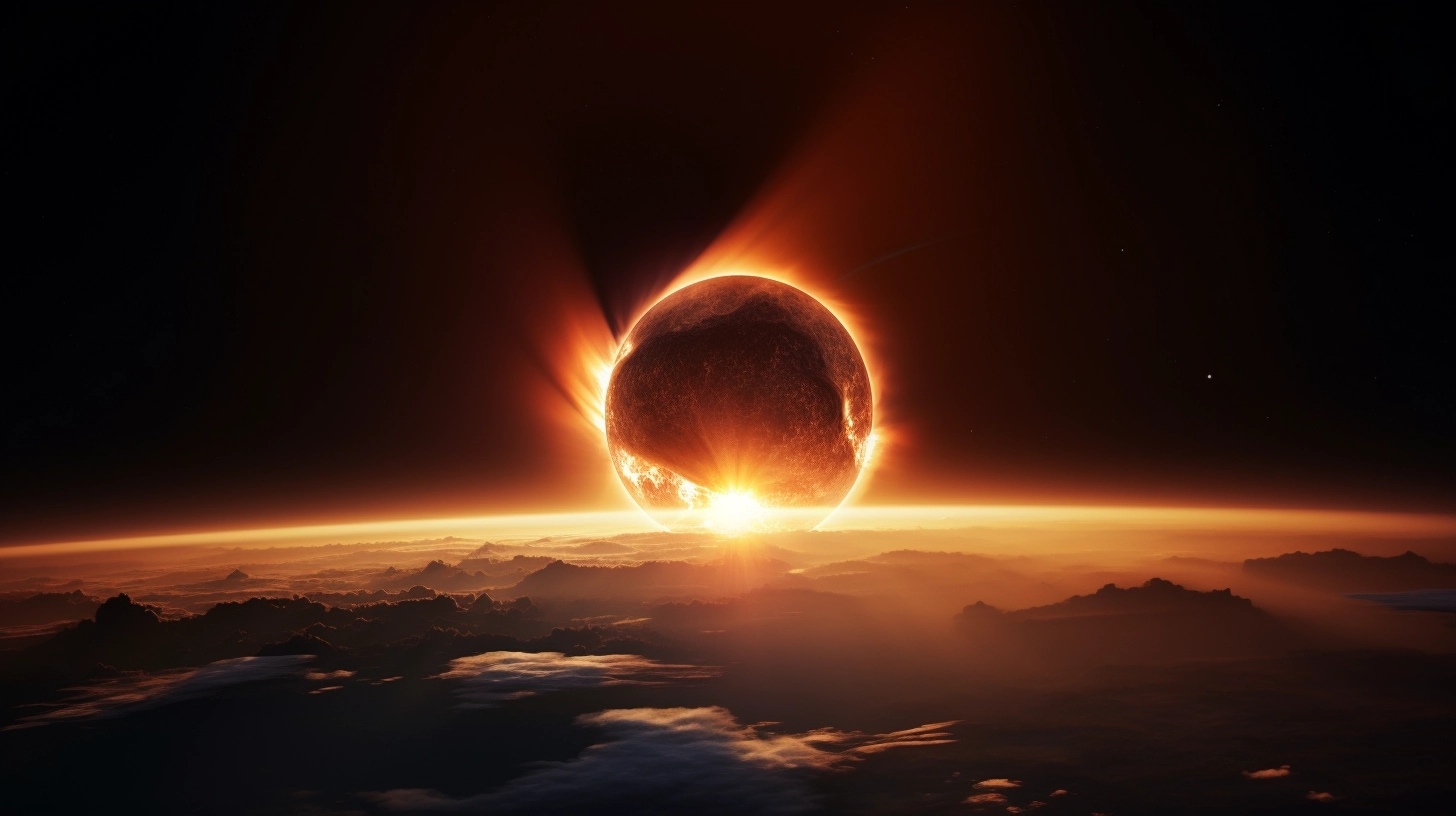- Everything You Need to Know About Experiencing the Next Coast-to-Coast Total Solar Eclipse in North America
- The Solar Eclipse of 2024 Path of Totality
- A Deeper Dive into the Phases of the Solar Eclipse of 2024
- Partial Eclipse Begins
- Total Eclipse Reaches Land
- Greatest Eclipse Over Indiana & Ohio
- Total Eclipse Exits Stage Right
- Partial Eclipse Concludes
- Witnessing Totality – An Experience Like No Other
- Top Locations for Experiencing Totality of the 2024 Eclipse
- Shawnee National Forest, Illinois
- Land Between the Lakes, Kentucky/Tennessee
- Brown County State Park, Indiana
- Hocking Hills State Park, Ohio
- Acadia National Park, Maine
- Photographing the Solar Eclipse of 2024
- Additional Tips for Viewing the 2024 Eclipse Safely
Everything You Need to Know About Experiencing the Next Coast-to-Coast Total Solar Eclipse in North America
On April 8, 2024, a total solar eclipse will cross the continental United States for the first time in nearly 100 years, captivating millions with its spectacular celestial show. Known as the “Great North American Eclipse,” this event promises to be a uniquely thrilling experience for anyone within the path of totality for the Solar Eclipse of 2024.
In this comprehensive guide, we’ll cover all the essential details you need to plan an unforgettable viewing of the eclipse, from the best locations to witness totality and safety tips, to exclusive photography techniques and tips for sharing the experience with family and friends. Whether you’re a seasoned eclipse chaser or a first-time observer, read on to ensure you make the most of nature’s marvel on full display.
The Solar Eclipse of 2024 Path of Totality
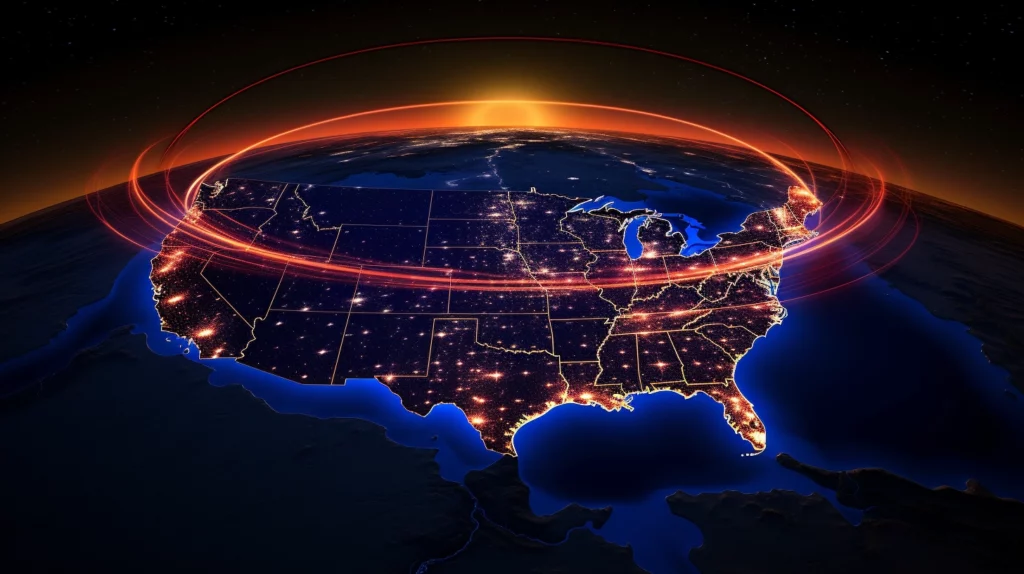
As the moon passes between the earth and sun, casting its shadow across the landscape, only those within the narrow 70 to 160 mile wide path of totality will see the sun’s fiery corona emerge in its entirety. Stretching from Texas to Maine, over a dozen states will experience the full spectacle of daylight turning to dark.
Major cities in the path include Dallas, Little Rock, Nashville, Cleveland and Buffalo, but the rural landscapes in between offer ideal viewing with wide open skies. The further north you travel, the longer totality will last – up to over 2 minutes for locations in Indiana and Ohio. Be sure to verify the precise timing for your specific area using eclipse mapping tools to maximize your experience of the Solar Eclipse of 2024.
A Deeper Dive into the Phases of the Solar Eclipse of 2024
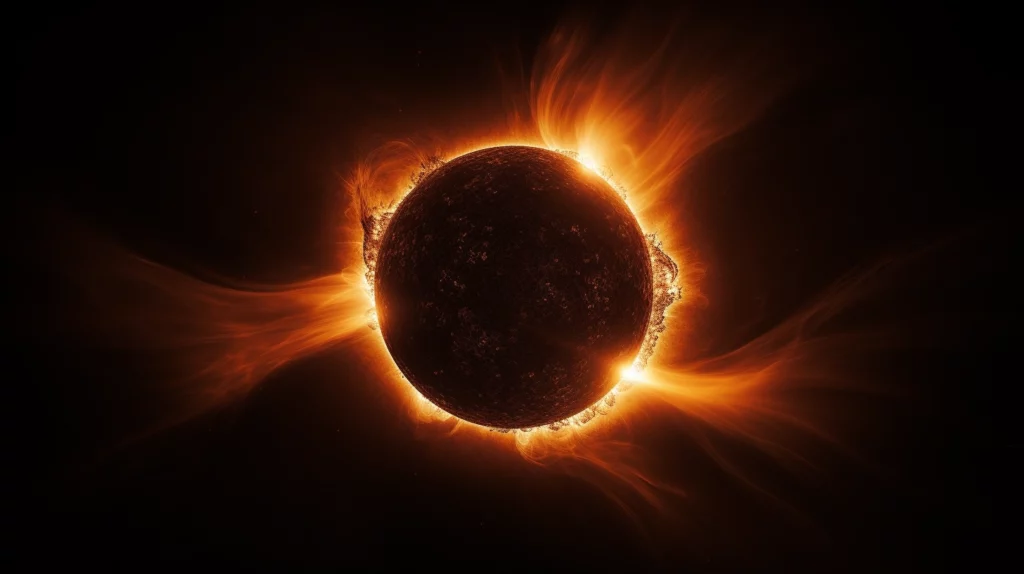
As the moon’s shadow sweeps across North America on its 1,500 mph journey, different stages will be visible at different times throughout the morning and early afternoon hours. Here’s a more in-depth look at the eclipse phases:
Partial Eclipse Begins
The first subtle signs of the eclipse will begin as a small bite is taken out of the left side of the sun. For Southern California, this occurs at 5:58 AM PDT. Binoculars or a telescope with proper solar filters are needed to spot the early stages.
Total Eclipse Reaches Land
Totality arrives along the Southern Texas coast near Brownsville at 7:58 AM CDT, where the sun’s pearly corona first bursts into view entirely encircled by the new moon.
Greatest Eclipse Over Indiana & Ohio
At 8:57 AM EDT, the center of the moon’s shadow will cross directly over Madison, Indiana, lingering the longest at over 2 minutes of total darkness. This is considered the maximum point of the Solar Eclipse of 2024.
Total Eclipse Exits Stage Right
As the shadow races eastward, the last glimpses of the total eclipse can be seen in Maine and New Hampshire around 10:09 AM EDT before the sun re-emerges in its entirety.
Partial Eclipse Concludes
Lingering hints of the eclipse linger until the very last sliver of sun reappears by 11:50 AM EDT along the Maine coast, signifying the full event has ended.
Witnessing Totality – An Experience Like No Other
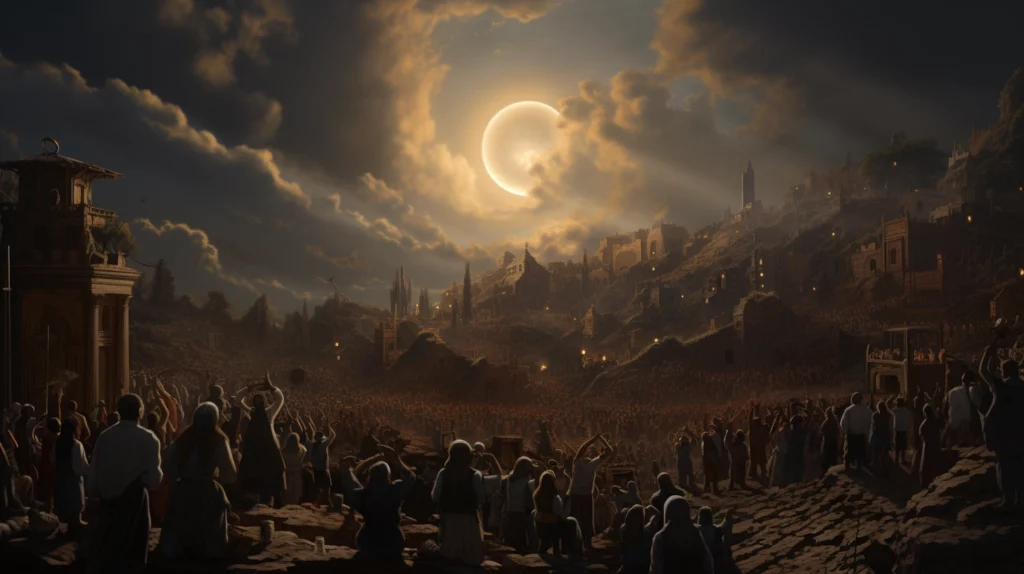
There is truly nothing else in nature that compares to the brief minutes of totality during a total solar eclipse. As the new moon’s black silhouette slips fully in front of the sun, the following incredible things will unfold high above:
- The light of day will instantly darken to appear as dusk, allowing brighter stars and planets to peek out
- Temperatures may drop by several degrees as the sun’s direct warming is cut off
- Animals will stir from their daytime slumber, confused by the unexpected night
- Against the blackness of the moon, the sun’s outer atmosphere – the corona – erupts into view in a shine of pearly whites and pastel colors
- Long crimson tendrils called prominences sometimes arc outward, fueled by unimaginable heat
- An eerie bluish light blankets the landscape as the upper atmosphere scatters more blue wavelengths towards your eyes
It is a truly transcendent sight that must be directly witnessed to be fully appreciated. Make plans now to be within the path of totality for the Solar Eclipse of 2024 and experience this natural wonder for yourself.
Top Locations for Experiencing Totality of the 2024 Eclipse
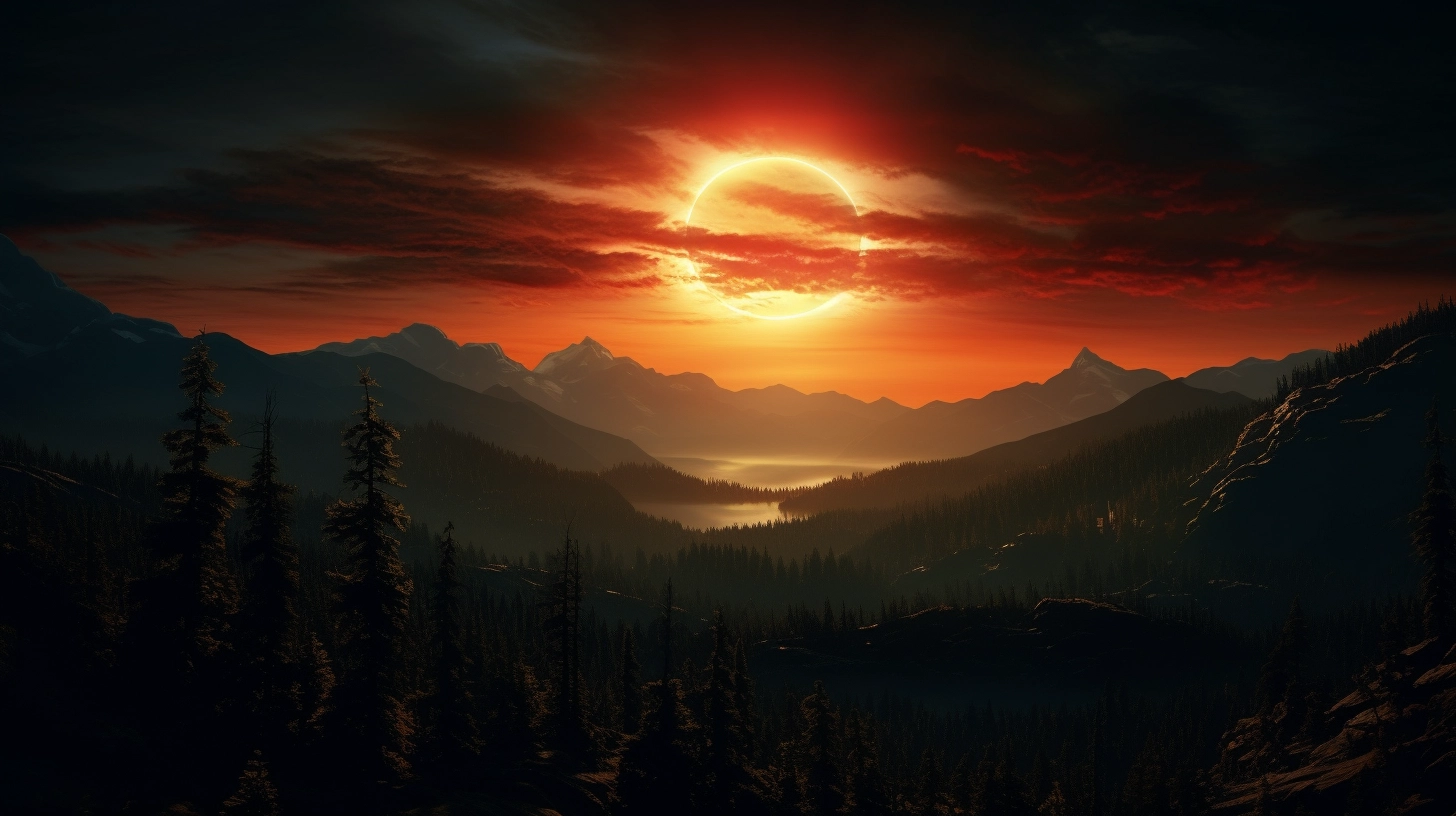
While major cities like Dallas, Nashville and Cleveland will see huge crowds, smaller towns and wide open areas provide optimal viewing conditions to truly soak in the magic of the Solar Eclipse of 2024 totality. Here are some of our top recommended locations:
Shawnee National Forest, Illinois
Vast stretches of hardwood forest surrounded by rolling farmland near Carbondale offer secluded spots to take in the eclipse amongst nature’s beauty. Nearby universities are hosting large public viewings.
Land Between the Lakes, Kentucky/Tennessee
This national recreation area straddling the border provides remote lake shorelines and forests protected under dark night sky designation, perfect for star gazing during totality.
Brown County State Park, Indiana
Scenic hills and valleys near Nashville, Indiana put you right in the path of maximum duration near 2 minutes of total darkness. Campsites are first-come-first-served.
Hocking Hills State Park, Ohio
Towering sandstone cliffs and deep gorges provide stunning backdrops for the eclipse within this popular hiking destination near Logan.
Acadia National Park, Maine
If traveling to the northeastern edge of the path, this park situated on Mount Desert Island offers ocean vistas and mountain trails to witness the finale of the Solar Eclipse of 2024.
No matter your choice, arrive early and come prepared to fully immerse yourself in the awe of a total solar eclipse.
Photographing the Solar Eclipse of 2024
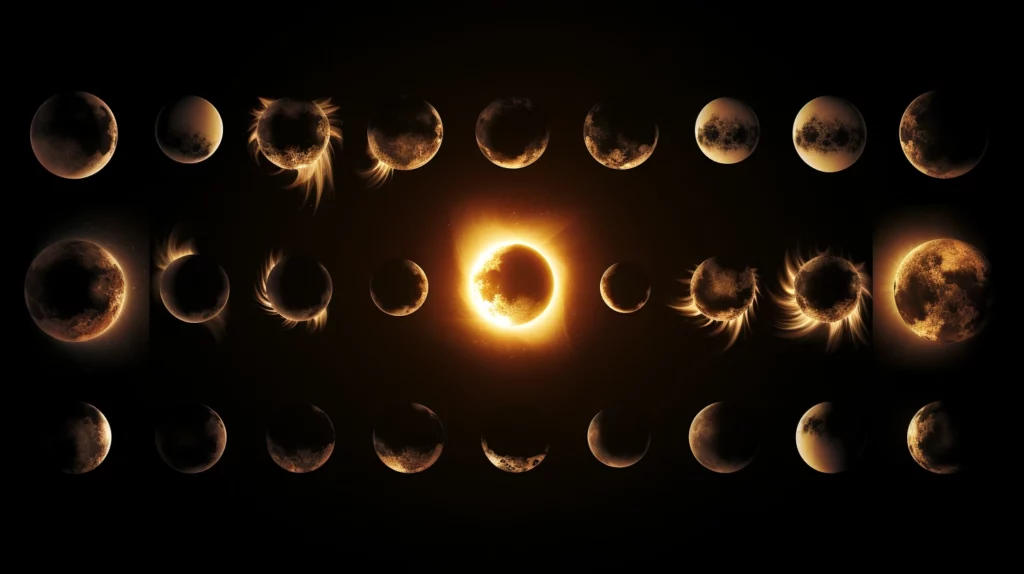
For astrophotographers, a total solar eclipse presents a rare chance to capture detailed images of the sun’s outer atmosphere, the corona. Here are some pro tips for successfully photographing the 2024 event:
- Use a DSLR with solar filter already mounted to the lens. Do test shots well beforehand.
- Shoot in RAW format for the most post-processing flexibility on details like prominences.
- Aim for ISO 800-1600 to balance shutter speeds around 1/500s with aperture settings like f/8-f/11.
- Focus manually using live view mode rather than an optical viewfinder near the sun.
- Try panning shots as the moon’s silhouette glides across to convey motion.
- Take rapid sequential shots to ensure catching fleeting moments like Baily’s Beads.
- Consider using a tracking mount to compensate for the earth’s rotation during longer exposures.
- Experiment with different compositions like landscape panoramas including ground details.
With practice, you’ll leave the Solar Eclipse of 2024 as a skilled astrophotographer. The images you capture will become priceless keepsakes of witnessing this remarkable event.
Additional Tips for Viewing the 2024 Eclipse Safely
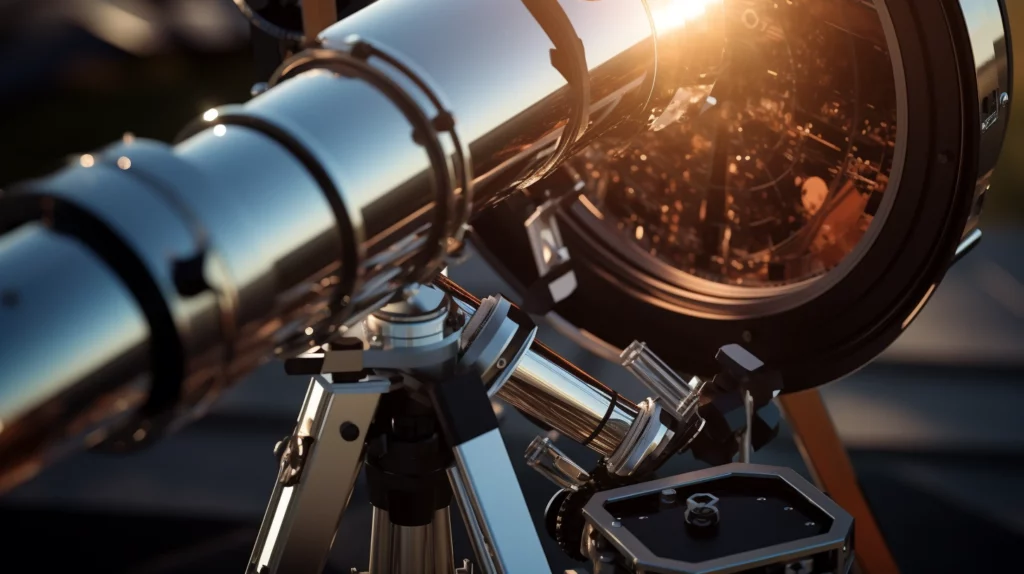
While total solar eclipses provide a mesmerizing glimpse of the sun’s atmosphere, looking directly at the uneclipsed or partially eclipsed sun can cause permanent eye damage without proper protection. Here are a few final tips to stay safe:
- Only use certified eclipse viewing or filtering methods like ISO-approved solar glasses during any phase before, during or after totality. Never look through an unfiltered camera, telescope or binoculars.
- Have backup plans like a pinhole projector or livestream ready in case of clouds obstructing the view.
- Use an app like Total Solar Eclipse to track the progress of the eclipse and know exact timing for your area.
- Dress warmly as temperatures may rapidly drop 10-15°F during totality before rebounding just as quickly.
- Point out features of interest to children like prominences ahead of time and quiz them on safety.
- Understand eclipse viewing glasses are single use disposable items – do not damage or reuse them.
- Practice safe viewing with your eclipse glasses beforehand. Make sure the glasses allow you to see a bright sun with no problems, but create a safe sun shape when viewing directly.
- Bring extra eclipse glasses in case some get damaged or lost. Children especially may accidentally damage their glasses.
- supervise children closely during the eclipse and make sure they don’t remove their glasses for any reason until the partial eclipse has ended.
- Drive carefully on eclipse day as traffic will be heavy in viewing areas. Be prepared for potential delays and follow all traffic safety procedures.
- Use a solar filtered telescope, binoculars or camera for a closer view of details during the partial phases before and after totality. Never look through the viewfinder.
- If you need to look away from the sun for a brief moment, don’t remove your glasses, just turn your back to the sun until you’re ready to view it again through the filtered glasses.
- Have backup plans for cloudy weather like indoor activities planned using livestreams of the eclipse from locations with clearer skies.
- Be aware of your surroundings – crowds will be large so have a meeting plan with family/friends in case you get separated.
- Remain at your viewing spot until the partial eclipse finishes to avoid being caught in traffic with improper eye protection.

Following these simple precautions will allow you to safely enjoy the full splendor of the Solar Eclipse of 2024 crossing our continent after nearly a century since the last. Clear skies to you all!

